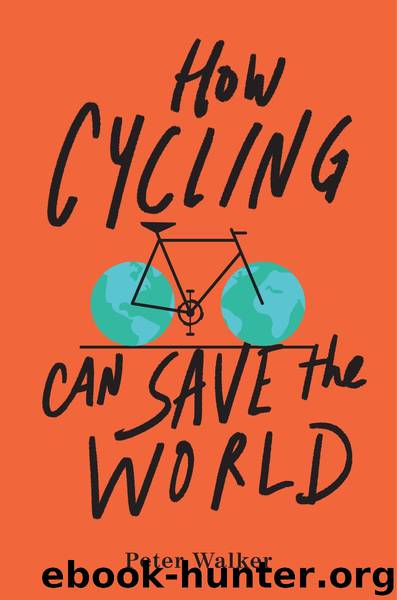How Cycling Can Save the World by Peter Walker

Author:Peter Walker
Language: eng
Format: epub
Publisher: Penguin Publishing Group
Published: 2017-03-15T14:37:53+00:00
CHAPTER 6
Die-Ins and Political Bravery—How Mass Cycling Happens
“We Forced Them to Take Decisions”
An unsuspecting local walking near the Saint Lawrence River in central Montreal that day in 1975 would have been forgiven for being a bit puzzled. Next to the water was a group of protesters with their bikes. Standing on a rock above them, and the focus for a gaggle of press photographers, was a man dressed as Moses—complete with robe, headdress, stick-on beard, and tablet of commandments. In his other hand was a wooden staff, which he was waving vigorously, ordering the waters to part so his people could cross.
This wasn’t some esoteric piece of street theater. It was a demonstration in favor of cycling infrastructure in the Canadian city, carried out by a then–newly formed group whose innovative tactics exemplify many of the elements needed to successfully persuade a city to build for bikes: people power, imagination, and an awful lot of persistence.
The man in the Moses costume was Robert Silverman, aka Bicycle Bob, one of the cofounders of La Monde à Bicyclette, a loose and occasionally chaotic collective of alternative types, left wingers, and general misfits who nonetheless played a pivotal role in turning Montreal into one of North America’s most cycle-friendly cities. “We went down to the riverside, me and another guy, me with a Moses costume rented from a store, with the tablets,” recalls Silverman, now in his eighties. “We pretended we were running away from the Egyptians.”
The stunt was to highlight the fact that decades of car-dominated city planning had left Montreal’s cyclists with no way to cross the river, as they were barred from all the bridges. Earlier protests had included trying to load bikes into canoes, and halting the traffic in the middle of one existing bridge with an impromptu game of volleyball. “We called ourselves the Poetic Velorutionary Tendency,” recalls Silverman. “That implied theater, and making it fun. And so we started doing theatrics.”
“Most people probably thought we were crazy, but the journalists loved our events, as they were so theatrical,” adds Jacques Desjardins, the only French Canadian among the group’s founders. “We were on the front pages every Monday.”
All this gradually bore fruit. A cycle bridge was built. City authorities also allowed bikes to be carried on the city’s subway after La Monde à Bicyclette very publicly carried increasingly outlandish objects onto trains, including ladders and cardboard-cutout elephants. The group staged “die-ins,” as had the equivalent Dutch protesters a few years earlier, though of course Silverman and his allies were even more dramatic, slathering themselves in ketchup to mimic blood.
While many cities experienced bike activism in the 1970s, in Montreal the protesters never gave up. The first bike lanes were eventually built in 1985, and the city now has nearly 400 miles of them, about 150 miles of which are separated from motor traffic, as well as about five thousand public-hire bikes.
While overall cycle use remains relatively low by Dutch or Danish standards, with about 10 percent of central
Download
This site does not store any files on its server. We only index and link to content provided by other sites. Please contact the content providers to delete copyright contents if any and email us, we'll remove relevant links or contents immediately.
Shoe Dog by Phil Knight(4890)
The Rules Do Not Apply by Ariel Levy(4524)
Walking by Henry David Thoreau(3681)
Running Barefoot by Amy Harmon(3336)
I'll Give You the Sun by Jandy Nelson(3273)
How to Read Water: Clues and Patterns from Puddles to the Sea (Natural Navigation) by Tristan Gooley(3240)
Crazy Is My Superpower by A.J. Mendez Brooks(3204)
How to Read Nature by Tristan Gooley(3079)
How Music Works by David Byrne(2964)
The Boy, the Mole, the Fox and the Horse by Charlie Mackesy(2821)
The Fight by Norman Mailer(2701)
Seducing Cinderella by Gina L. Maxwell(2542)
Cuba by Lonely Planet(2487)
Accepted by Pat Patterson(2218)
Going Long by Editors of Runner's World(2211)
The Unfettered Mind: Writings from a Zen Master to a Master Swordsman by Takuan Soho(2158)
The Happy Runner by David Roche(2119)
Backpacker the Complete Guide to Backpacking by Backpacker Magazine(2110)
Trail Magic by Trevelyan Quest Edwards & Hazel Edwards(2054)
